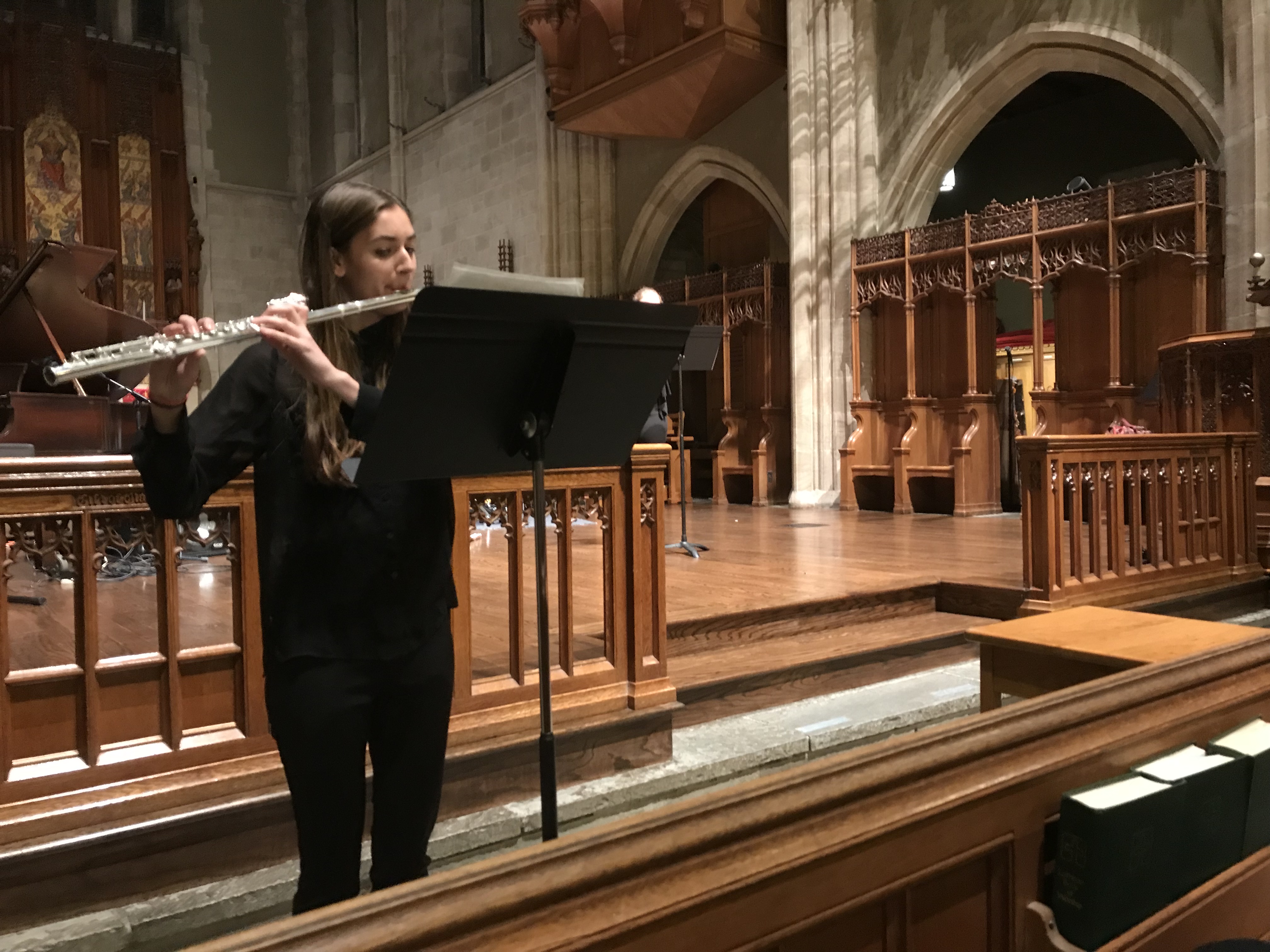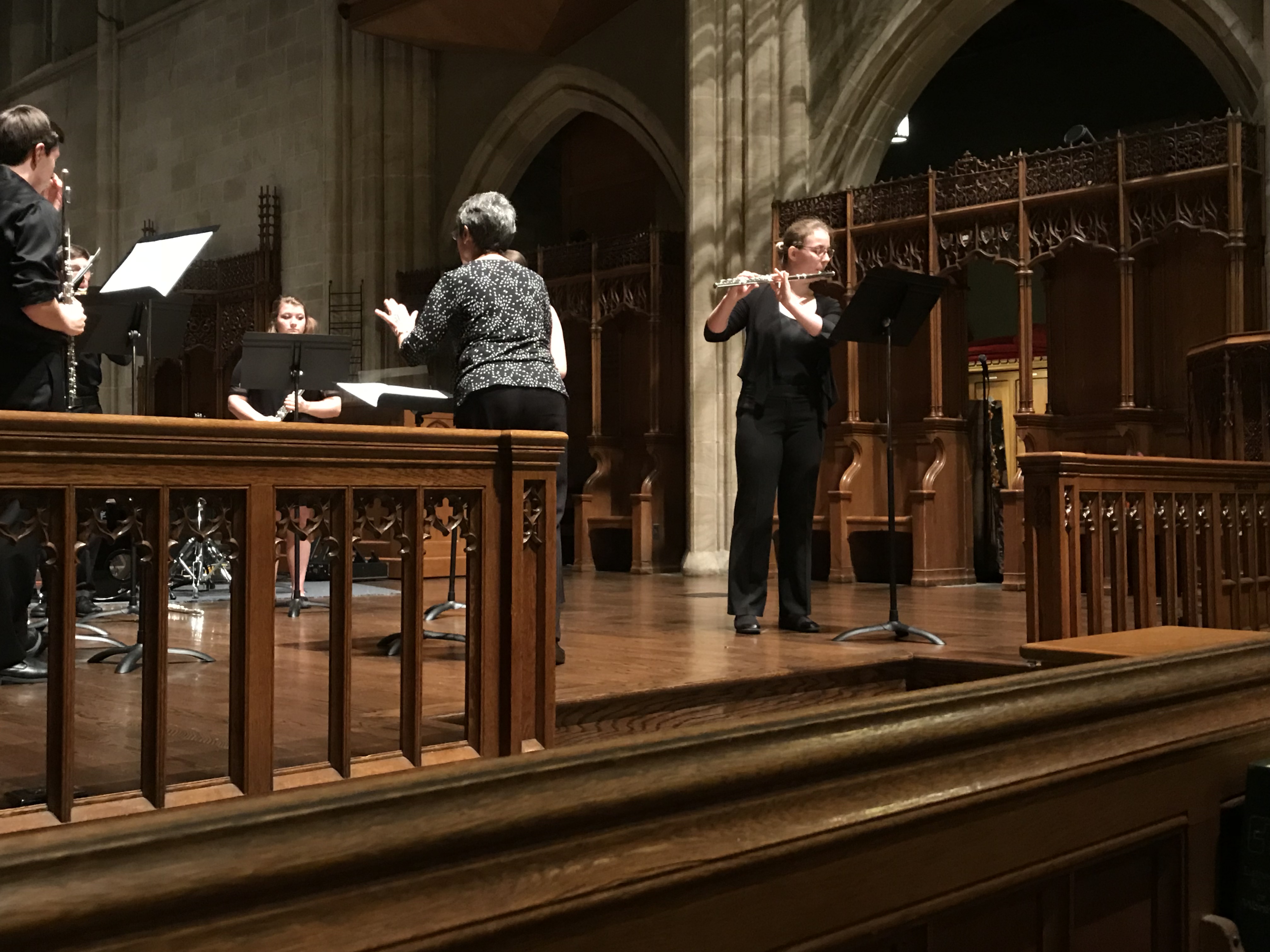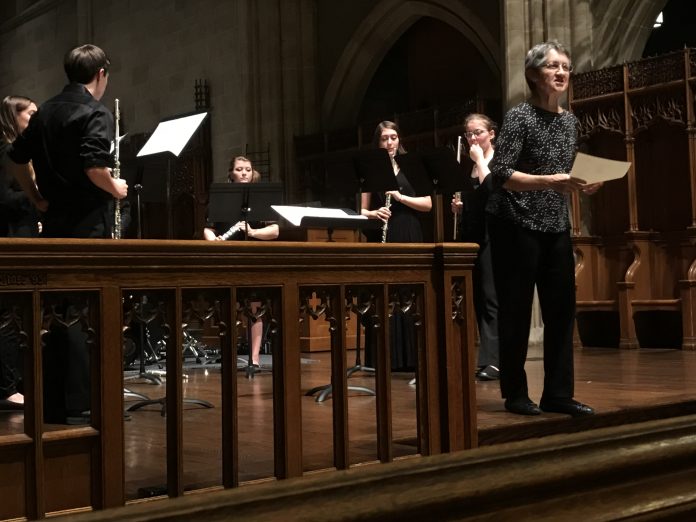On Oct. 29, 2017, a rainy Sunday evening around 7 p.m., Muhlenberg’s Flute Ensemble presented a series of pieces within the walls of Egner Chapel. They ranged from Baroque styles and interpretations to Gaelic and contemporary arrangements; the concert itself was a spectacle of culture and time. Sponsored and lead by director Elaine Martin, the concert was used as a means to both present the audience with Muhlenberg’s talented flute ensemble as well as showing how the instrument can incorporate and re-interpret their ensemble works. What I mean by this is that set genres of music were re-defined that Sunday evening–re-defined to a point of complete renewal. For instance, they not only incorporated pieces of the baroque era (a time often associated with the flute as well as Christian idiocentric works), but pieces from other periods in time, as well as various other geographical locations. Works such as, “A Gaelic Offering,” a Jazz piece “A Child is Born” and a more contemporary work titled “Walk Like This” were all given a share of the spotlight. All the students who performed did a marvelous job, clearly demonstrating their precision and talents.
The particular concept of combining geographical areas interested me, as I myself never thought of the flute quite as “transnational” as I do now. I generally defined it as a “western” instrument. It’s become apparent now how truly wrong that assumption was. The flute is an instrument that is so integrated in various cultures and folklore, that it is often a part of the very metonymy that is the country it’s representing. For instance, the author of “World Flutelore: Folktales, Myths, and Other Stories of Magical Flute Power,” Dale Olsen, describes the importance of the flute as that of a direct “function…in a world context.” Olsen further argues that “a significant understanding of the magic and power of the world flutes is possible through legends–that is, flutelore.” The recital seemed to latch onto this concept of “world flutes” (whether intentional or not) and further set a value on its power of the narrative. The flute was not only a means of entertainment, but also a means of storytelling. A well-known example of this is from the tragic German legend–the Pied Piper.

This mysterious figure, who is said to have caused the disappearance of hundreds of children, is pictured with either a recorder-like instrument (hence “Pied Piper”) a golden flute. In one film interpretation of the legend, the Piper played a certain tune every time– “In the Hall Of the Mountain King” by Edvard Greig. Whenever the flutist played in a higher register, only the children would be able to hear; when the he played in a lower register, only the adults. It was an interesting choice of symbolism in which the higher octaves (or soprano part) represents a sort of purity and innocence, while everything lower referred to darker elements to the human psyche.
It is with this in mind that I would like to explore the piece “For unto us a child is Born” from Handel’s Messiah. Originally a small vocal ensemble piece that was a part of a much larger work called an oratorio, the work was re-arranged for Muhlenberg’s flute ensemble. While the transition from vocal to instrumental removes the lyrics from the performance, this particular arrangement allows for further ornamentation as well as a higher range within the melodies. There is a particular moment where a single flute begins only for a second to follow a similar melodic line (except a beat behind). This creates what seems to be a cannon structure–a round between the two flutists.

A third flutist soon joins the other two–except with a contrasting melody that soon derails the pattern developed by the original two. Soon, all five flutists are contributing various similar and differing motives to the original melody line–emphasizing a growth in sound and complexity. The piece in general is celebratory–hence the title “Unto us a child is born.” However, while the oratorio in it’s original form has the support of vocals of an entire orchestra, this particular arrangement had only the five flutes–meaning it was much thicker with layers and layers of varying musical motives.
I was truly grateful to have witnessed this performance, and I look forward to seeing where the ensemble may go from here in the coming semesters.
Lauren Mazur, member of the class of 2019, serves as the co-editor of the Arts & Culture section. Now a Junior, she is a double major in English and Music as well as a part of the Pre-Law program.






















